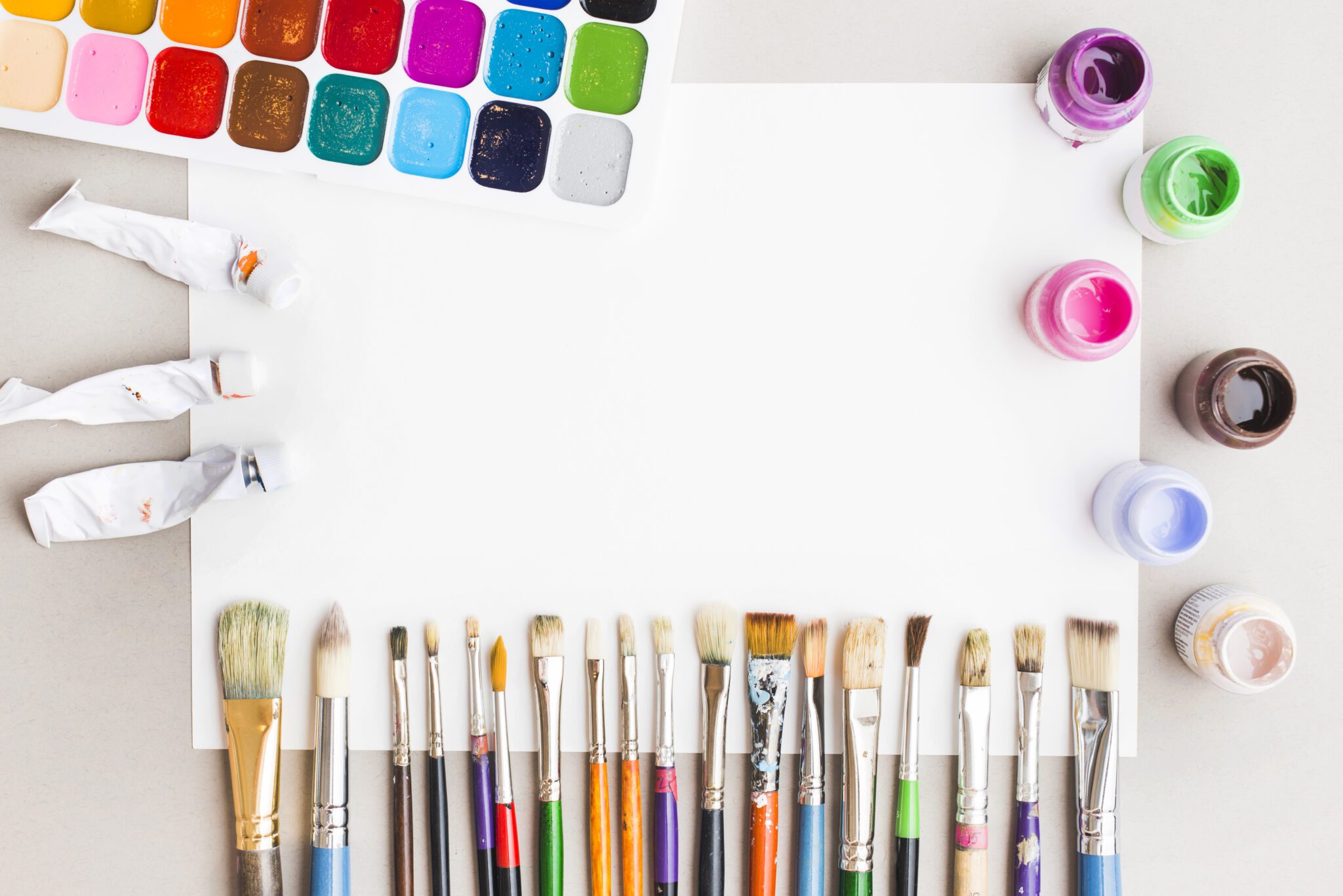The stippling brush is an extraordinary tool in the artist’s arsenal, specifically designed for producing intricate textures and subtle effects in painting. Its tightly packed bristles allow for a unique method of applying paint, enabling artists to create everything from delicate patterns to bold textures in their work. In this comprehensive guide, we’ll explore the characteristics of the stippling brush, its techniques, and how to leverage it to create complex textures in your acrylic paintings.
1. Understanding the Stippling Brush
The stippling brush features a round head of densely packed bristles that can vary in size. The key attributes of a stippling brush include:
- Densely Packed Bristles: Facilitates the application of small dots or stipples of paint, which can be layered to create depth and dimension.
- Versatility: Effective across various painting styles, from realism to abstract art.
- Control: Offers significant control over paint application, allowing for fine adjustments.
2. Best Uses for the Stippling Brush
The stippling brush excels in several applications:
- Texture Creation: Perfect for depicting surfaces such as fur, grass, and foliage, adding a tactile quality to your artwork.
- Blending Colors: Can be used to create subtle transitions between colors and soften edges.
- Adding Detail: Useful for making intricate details that enhance the overall composition, such as highlights or shadow patterns.
3. Techniques for Creating Complex Textures
Here are various techniques to master the stippling brush and create rich textures in your artwork:
a. Basic Stippling
- Dotting Technique: Load your stippling brush with paint and hold it vertically. Gently tap the brush onto the canvas to create small dots. The density and placement of the dots will determine the overall texture.
- Varying Pressure: Adjust the pressure and amount of paint on the brush to achieve different sizes and intensities of dots. Light pressure produces smaller dots, while firmer pressure yields larger ones.
b. Layering Techniques
- Building Layers: Start with a base color and allow it to dry. Once dry, layer subsequent colors using the stippling brush. Each layer adds complexity and depth to the texture.
- Gradation Effects: To create a gradient, gradually increase the density of the dots from light to dark across the area. This technique allows for smooth transitions in color, ideal for creating the illusion of depth.
c. Blending with the Stippling Brush
- Softening Edges: Use the stippling brush to gently tap along the edges of painted areas to soften them. This technique helps in blending two colors or harmonizing distinct elements in your artwork.
- Creating Glazes: Mix a fluid glaze and use the stippling brush to apply it over dried paint. The stippling technique can help to create a subtle, textured overlay that enhances depth without losing the underlying detail.
4. Advanced Techniques
- Combining Stippling with Other Brushes: Use the stippling brush in conjunction with other brushes. For instance, you can lay down larger shapes with a flat or round brush, then use the stippling brush for finishing details and textures.
- Texture Experimentation: Experiment with different materials (like sand or modeling paste) mixed into your paint for added texture. Use the stippling brush to apply and manipulate these materials, achieving unique surface qualities.
- Masking Technique: Use masking tape to create defined areas, apply the stippling technique, and remove the tape for clean lines. This approach can produce elegant designs and patterns with clear boundaries.
5. Creating Specific Textures
With practice, you can master different textures based on the application of the stippling brush:
- Fur Texture: Build layers using stippling in varying shades to mimic the look of fur. Use quick, flicking motions to create the appearance of individual hairs.
- Grass and Foliage: Use light, quick taps and overlap various shades of green to build rich, textured grassy patches or leaves on trees. Mix in yellows and blues for highlights and shadows.
- Emulating Nature: To create effects like stone or bark, use dry brushing techniques with the stippling brush to tap on darker shades while allowing the dry brush techniques to create irregularities.
6. Cleaning and Maintenance
Proper care for your stippling brush ensures its longevity and performance:
- Clean After Use: Rinse the brush thoroughly in warm, soapy water immediately after use. Make sure to remove any paint from the bristles to prevent hardening, which can affect performance.
- Reshape While Wet: After washing, gently reshape the brush bristles and allow it to dry flat or hanging to preserve its form.
- Storage: Store your brush upright or in a protective case to avoid damage and ensure the bristles maintain their shape.
7. Conclusion
Mastering the stippling brush can significantly enhance your ability to create complex textures in your acrylic paintings. By applying the techniques and tips outlined in this guide, you can develop a unique style and bring depth and richness to your artwork.
Don’t forget to explore our selection of stippling brushes and other essential art supplies available at urartstudio.com to support your creative journey!
Be sure to visit our online store at https://urartstudio.com/shop/ for a variety of art supplies and tools. Additionally, check out valuable painting tips at urartstudio.com/painting-tips/ and our step-by-step painting instructions at https://urartstudio.com/step-by-step-painting-instructions/ to further enhance your skills.
Keywords: stippling brush, texture creation, acrylic painting techniques, layering, blending.
#StipplingBrush, #TextureCreation, #AcrylicPainting, #Layering, #ArtSupplies



Leave a Reply
You must be logged in to post a comment.